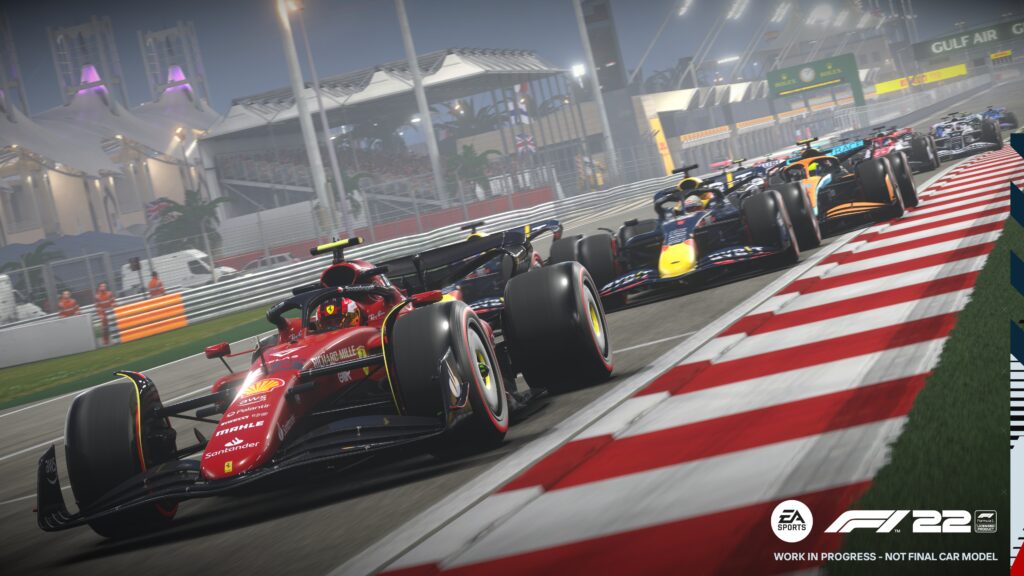Racing simulation games have come a long way since their inception, and advancements in technology have helped to enhance the gaming experience by providing a more realistic and immersive experience. The evolution of racing simulation games has seen sub-genres emerge, including Formula One, Rally, Sports Car, and Open-world racing games, each with its unique gameplay mechanics and features. With the introduction of VR technology, racing simulation games are becoming even more lifelike, enabling players to experience a 360-degree immersive environment that simulates the experience of being in a real race car. As technology continues to advance, the genre will continue to push the boundaries of what is possible.
The Thrill of the Race: A Look into Racing Simulation Games
Introduction
Racing games have been a popular genre in the gaming industry for a long time. With advancements in technology, racing simulation games have become more realistic and immersive, providing players with an experience that comes close to a real-life racing experience. This article will discuss how racing simulation games have evolved over the years, the impact of technology on the genre, and the sub-genres of racing simulation games.
The Evolution of Racing Simulation Games
Racing simulation games have come a long way since their inception. The first racing games were simple, two-dimensional, and had limited gameplay. However, with the introduction of 3D graphics, the genre evolved rapidly. The first 3D racing game, ‘Hard Drivin’ was released in 1989, and it marked the beginning of a new era for racing simulation games.
The 1990s saw a surge in the popularity of racing games. The introduction of CD-ROMs allowed developers to produce games with more realistic graphics and sound. In 1992, ‘Grand Prix Legends’ was released, which was the first racing simulation game to introduce realistic physics and car handling. This game set the benchmark for what racing simulation games should be.
The 2000s saw the introduction of online multiplayer modes, which allowed players to race against others from around the world. Developers also began to experiment with different sub-genres of racing games, such as arcade-style racing games and open-world racing games.
The Impact of Technology on Racing Simulation Games
Technology has had a significant impact on racing simulation games. With the advancements in graphics, sound, and physics engines, racing games have become more lifelike than ever before. Developers use motion capture technology to accurately capture the movements of professional drivers, which makes the racing experience more immersive.
The introduction of VR technology has also revolutionized the genre. Players can now experience racing games in a 360-degree immersive environment, which simulates the experience of being in a real race car. VR technology has helped to bridge the gap between real-life racing and racing simulation games.
Sub-genres of Racing Simulation Games
Racing simulation games can be classified into different sub-genres, each with its unique gameplay mechanics and features. Some of the most popular sub-genres of racing simulation games include:
Formula One Racing Games
Formula One racing games are based on the real-life Formula One World Championship. These games feature realistic physics and car handling, and players can compete in races against other players from around the world. The games also include licensed cars, drivers, and tracks.
Rally Racing Games
Rally racing games simulate off-road racing events such as the World Rally Championship. These games require players to navigate through different terrain types such as mud, snow, and gravel, making the gameplay more challenging.
Sports Car Racing Games
Sports car racing games simulate races featuring high-performance sports cars. These games often feature a mix of road and track racing, and players can modify their cars to improve performance.
Open-world Racing Games
Open-world racing games allow players to freely explore a massive game world with no set tracks or routes. These games often feature multiple modes, including street racing, off-road racing, and car customization.
Conclusion
Racing simulation games have evolved immensely over the years, and technology has played a significant role in the development of the genre. With the introduction of VR technology, racing simulation games are becoming more realistic and immersive than ever before. The sub-genres of racing simulation games offer players a diverse range of gameplay mechanics and features, making the genre appealing to a variety of players. As technology continues to advance, we can expect racing simulation games to continue to push the boundaries of what is possible.
